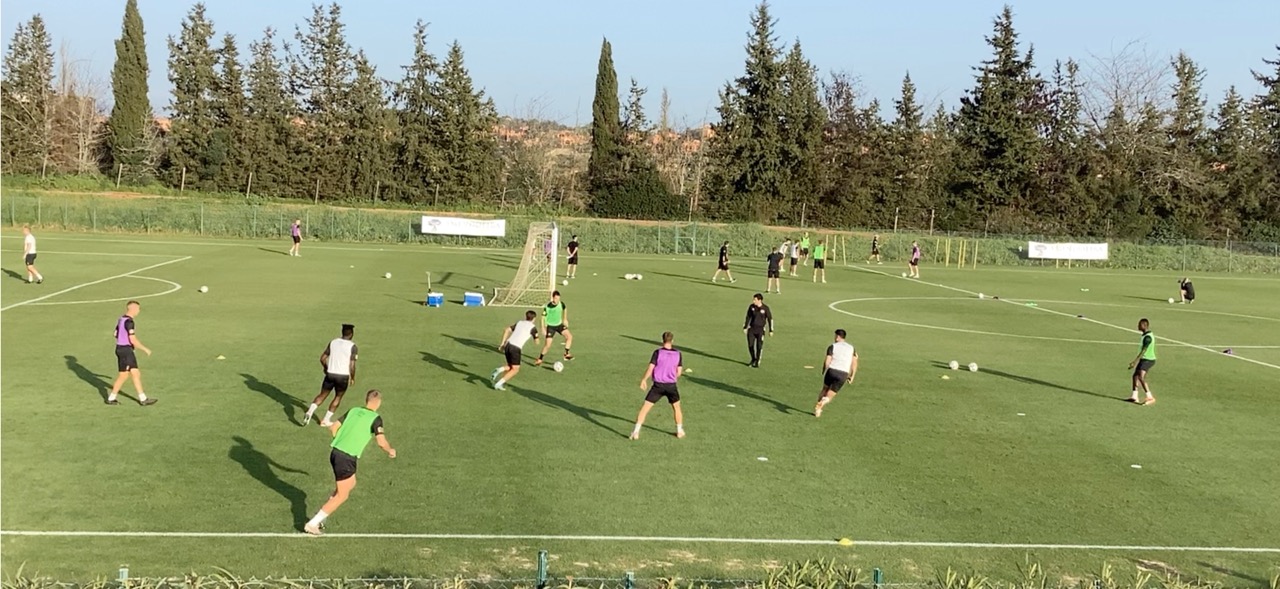
In order for players to improve and teams to elevate their performance in the competition, it is key that as coaches we generate the best possible context in our training sessions. Coaches are responsible for making sure their training sessions present all the necessary elements for players to be able to assimilate all the concepts and be able to apply them in the situations they will face in matches. In this article, we will go through some of the 7 secrets to create a good training session. These elements are the concepts to be trained, the appropriate teaching strategy, the number of players we use for the task, the space where the players will train, the criteria to score points, the structure rules and the behavior rules.
Content-Concept
Perhaps the most important element for preparing good training sessions are the content and concepts we want to teach our players. As coaches, we should select exercises based on our team’s current needs, not just our personal preferences. Coaches must choose exercises taking into account the needs of the team and the players at the moment. Therefore, first, you need to understand what they need and then choose the content to prepare. After determining what you need to work on, you need to go a little deeper and determine at what stage of the game this is happening, how much space is needed and how many players are involved.
Considering the players’ development stage is also vital. During the specialization stage (U14-U19), we should move from simple tasks where we train individual universal fundamentals towards main tasks where attention is paid to individual fundamentals by position and team fundamentals. These exercises should be interlinked to help players connect and understand the ideas and concepts they are training. The same principle applies during the initiation stage (U6-U13), where we will focus mostly in individual universal fundamentals (passing, shooting, marking…) and will not specialize by position.
We should start training sessions with a light exercise, that could be for instance on ball possession or perception, and then we make a wave where basic fundamentals are trained and finish our training with a match.
“THE MOST IMPORTANT ELEMENT FOR PREPARING GOOD TRAINING EXERCISES IS THE CONTENT-CONCEPT. AS COACHES, WE SHOULD SELECT EXERCISES BASED ON OUR TEAM’S CURRENT NEEDS, NOT JUST OUR PERSONAL PREFERENCES.”
Number of Players
Managing the number of players in training is another important aspect. This element is going to help us with the following:
- Guide the exercise towards the content we want to work on, provoking different behaviors of our players
- Help to adjust the level of the task to the players
The number of players affects the behavior of the players. For example, in a 3 vs 3 game, players will use unmarking movements, ball protection and dribbling. However, if we add two jokers to this task, they will focus more on the ball movement due to the presence of a free teammate. So, the number of players should depend on the content you want to work on.
Also, it is important to note that perhaps the quality of our players does not allow us to use the same level of density as we have in real games. In other words, if the players are not able yet to solve certain situations, perhaps we can add some extra players to facilitate proper exercise resolution.
Space
The third secret to generate a good training context is the space. In the same way as the number of players, the first thing space helps to do is to guide the game towards the content we want to train, provoking different behaviors in our players. The selected space determines the behavior of the players in one or another direction. As in the previous example about the number of players, adjusting the space can also help to adjust the task difficulty to the players’ level—the bigger the space, the easier to solve the exercise.
While determining the space we also need to take into consideration not only the general space but also the inner space management, because it will affect players and change their behavior. For example, if you as a coach, regularly use exercises with small spaces where your players don’t have enough time to turn and they can only play to teammates in front of them, this will translate into real games.
Another factor we need to think about is how the space will determine the context quality of the exercices. We need to analyze space where the game situation happens during real matches, and try to replicate as much as possible the same space in our training sessions. Using a similar space as the one players will encounter during matches, will help players be able to recognize and solve those situations when they are in the competition.
Behavior Rules
Also, behavior rules are essential. To have smart players in our teams, we must encourage them to use their analytical skills and discover optimal solutions independently. Also, the exercise rules can’t go against the internal logic of the game, ensuring relevance to actual gameplay. Lastly, as coaches we should create problems in our training exercises that players can solve using the concepts being taught.
Conclusion
Generating a good training context in training sessions is a multifaceted process that depend on multiple factors. In this article, we have seen some of the 7 secrets that help create the best training context in training sessions. Coaches are encouraged to meticulously select exercises that cater to their team’s immediate needs, thoughtfully manage the number of participants to influence player behaviors, strategically use space to provoke desired actions and set behavior rules that foster independent problem-solving while mirroring the game’s internal logic. This holistic approach not only aids in the development of adept and tactically aware players but also ensures that the training environment is conducive to learning and growth, thereby preparing players for the complexities they will find during real games.
Want to learn more about how to generate a good training context for your training sessions?
Watch our webinar about this topic in our virtual campus and learn more about how to high performance training sessions.
